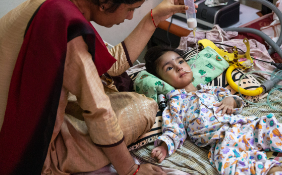Scientists finally read the hidden DNA code that shapes disease
A team of EMBL researchers and collaborators has now created a tool that takes single-cell analysis to a new level. It can capture both genomic variations and RNA within the same cell, offering greater accuracy and scalability than earlier technologies. This approach allows scientists to identify variations in non-coding regions of DNA, the areas most often linked to disease, giving them a new way to explore how genetic differences contribute to human health. With its precision and ability to process large numbers of cells, the tool marks a major step toward linking specific genetic variants with disease outcomes.
"This has been a long-standing problem, as current single-cell methods to study DNA and RNA in the same cell have had limited throughput, lacked sensitivity, and are complicated," said Dominik Lindenhofer, the lead author on a new paper about SDR-Seq published in Nature Methods and a postdoctoral fellow in EMBL's Steinmetz Group. "On a single-cell level, you could read out variants in thousands of cells, but only if they had been expressed -- so only from coded regions. Our tool works, irrespective of where variants are located, yielding single-cell numbers that enable analysis of complex samples."
The important difference between coding and non-coding regions
DNA contains both coding and non-coding regions. The coding parts function like instruction manuals, since their genes are expressed into RNA, which directs cells in building proteins essential to life.
Non-coding regions, on the other hand, contain regulatory elements that guide how cells grow and function. Over 95% of disease-linked DNA variants occur in these non-coding regions, yet existing single-cell methods have not had the sensitivity or scale to study them effectively. Until now, researchers were unable to observe DNA and RNA from the same cell on a large scale, limiting insight into how DNA variants affect gene activity and contribute to disease.
"In this non-coding space, we know there are variants related to things like congenital heart disease, autism, and schizophrenia that are vastly unexplored, but these are certainly not the only diseases like this," Lindenhofer said. "We needed a tool to do that exploration to understand which variants are functional in their endogenous genomic context and understand how they contribute to disease progression."
#DNA
#Genetics
#MolecularBiology
#Genomics
#DNAStructure
#GeneticEngineering
#DNAReplication
#CRISPR
#GenomeEditing
#Biotechnology




Comments
Post a Comment